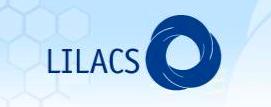ARES
the virtual collection with open access to educational resources in health
DOI:
https://doi.org/10.5712/rbmfc19(46)4468Keywords:
Libraries Digital, Education, Continuing, Health personnel, Unified Health System.Abstract
Introduction: The Open University of the Brazilian Unified Health System (UNASUS) is a strategy for continuing education in health through distance learning (EaD). The Health Educational Resources Collection (ARES) is one of its pillars, being the largest digital health collection in Latin America, promoting open access to knowledge and education in a democratic and unrestricted manner. Objective: To discuss the importance of ARES, presenting its model for accessing and distributing digital educational resources, thereby promoting the democratic dissemination of health knowledge based on scientific evidence. Methods: This exploratory study analyzes the educational resources of the ARES platform, focusing on the open access policy and free distribution of materials. Data were collected through: 1) Manual review of ARES metadata, which includes the type of resource, UNASUS network institutions, and areas of study; 2) Electronic review of the Pubmed, Bireme, ERIC, SciELO and Google Scholar databases to understand the functioning and importance of virtual repositories in health. There was no time restriction, considering the long history of virtual repositories. Results: Virtual repositories and digital libraries, driven by the popularization of EaD and e-learning, have a significant impact on global research, but accessibility is still uneven. The ARES platform, a specialized health repository, uses green open access, allowing free access, download and reuse of its 20,512 educational resources. Of these, 65.43% focus on ‘Primary Care and Family Health.’ The integration of digital collections in cooperation networks expands access and improves training and resource management. Conclusions: Digital repositories, such as ARES, democratize access to digital information, being an important tool for family and community physicians who seek comprehensive care for their patients, especially those belonging to historically vulnerable groups and from remote areas.
Downloads
Metrics
References
BRASIL. Portaria nº 1.325, de 27 de maio de 2010. Revoga o Capítulo III, do Anexo XVIII da Portaria de Consolidação nº 2/GM/MS, de 28 de setembro de 2017, que trata do “Serviço de Avaliação e Acompanhamento de Medidas Terapêuticas Aplicáveis à Pessoa com Transtorno Mental em Conflito com a Lei”, no âmbito da Política Nacional de Atenção às Pessoas Privadas de Liberdade no Sistema Prisional. Diário Oficial da União. 2020 maio 25;98(seção 1):185
Carvalho RA de, Struchiner M. Conhecimentos e expertises de universidades tradicionais para o desenvolvimento de cursos a distância da universidade aberta do sistema único de saúde (UNA-SUS). Interface 2017;21(63):991-1003. https://doi.org/10.1590/1807-57622016.0027 DOI: https://doi.org/10.1590/1807-57622016.0027
Oliveira JM de, Conceição JRB da, Caldeira FID, Santos Filho JC dos, Lemos AF, Gasque KCS. Painel de Monitoramento da produção científica vinculada à Rede UNA-SUS: resultados de 2009 a 2020. Sau & Transf Soc 2022;13(2):47-61.
Gasque KCS, Rodrigues MMS, Lemos AF, Araújo DG. Sistema UNA-SUS como ferramenta de democratização da Educação Permanente em Saúde. RBAAD 2021;20(1):1-31. https://doi.org/10.17143/rbaad.v20i1.476 DOI: https://doi.org/10.17143/rbaad.v20i1.476
Gunn H. Virtual libraries supporting student learning. SLW 2002;8(2):27–37. https://doi.org/10.29173/slw7108 DOI: https://doi.org/10.29173/slw7108
Oliveira AF de, Cunha MB da. Collection Development in Digital Collections. Rev Digit Bibliotecon Cienc Inf 2019;17:1-20. https://doi.org/10.20396/rdbci.v17I0.8655177/e019025 DOI: https://doi.org/10.20396/rdbci.v17i0.8655177
JLIS.it R. Budapest Open Access Initiative (2002). JLIS.it. 2012;3(2). https://doi.org/10.4403/jlis.it-8629
Fundação Oswaldo Cruz. Portaria PR nº 382/2014. Institui a Política de Acesso Aberto ao Conhecimento, visando garantir à sociedade o acesso gratuito, público e aberto ao conteúdo integral de toda obra intelectual produzida pela Fiocruz. Rio de Janeiro: Fiocruz; 2014.
ARES – Acervo de Recursos Educacionais em Saúde [Internet]. Brasília: ARES/UNASUS, 2024 [acessado em 27 dez. 2024]. Disponível em: https://ares.unasus.gov.br/acervo/
Owusu-Ansah CM, Rodrigues AS, van der Walt TB. Integrating Digital Libraries into Distance Education: A Review of Models, Roles, And Strategies. TOJDE 2019;20(2):89-104. https://doi.org/10.17718/tojde.557742 DOI: https://doi.org/10.17718/tojde.557742
Liu Z, Luo L. A Comparative Study of Digital Library Use: Factors, Perceived Influences, and Satisfaction. The Journal of Academic Librarianship 2011;37(3):230-6. https://doi.org/10.1016/j.acalib.2011.02.015 DOI: https://doi.org/10.1016/j.acalib.2011.02.015
Hall M. Green or gold? Open access after Finch. Insights: the UKSG Journal 2012;25(3):235-40. https://doi.org/10.1629/2048-7754.25.3.235 DOI: https://doi.org/10.1629/2048-7754.25.3.235
Cornell University. Open Access Publishing: What is Open Access? 2022.
Suber P. Open Access. 1st ed. Cambridge: MIT Press; 2012. DOI: https://doi.org/10.7551/mitpress/9286.001.0001
Green HE, Lampron P. User engagement with digital archives for research and teaching: A case study of Emblematica Online. Libraries and the Academy 2017;17(4):759-75. https://doi.org/10.1353/pla.2017.0045 DOI: https://doi.org/10.1353/pla.2017.0045
Hino P, Ciosak SI, Fonseca RMGS da, Egry EY. Necessidades em saúde e atenção básica: validação de instrumentos de captação. Rev Esc Enferm USP 2009;43(spe2):1156-67. https://doi.org/10.1590/S0080-62342009000600003 DOI: https://doi.org/10.1590/S0080-62342009000600003
Downloads
Published
How to Cite
Issue
Section
License
Copyright (c) 2024 Josué Miguel de Oliveira, François Isnaldo Dias Caldeira, Lucas Ribeiro Monteiro, Kellen Cristina da Silva Gasque

This work is licensed under a Creative Commons Attribution 4.0 International License.
By submitting a manuscript to the RBMFC, authors retain ownership of the copyright in the article, and authorize RBMFC to publish that manuscript under the Creative Commons Attribution 4.0 license and identify itself as the vehicle of its original publication.














